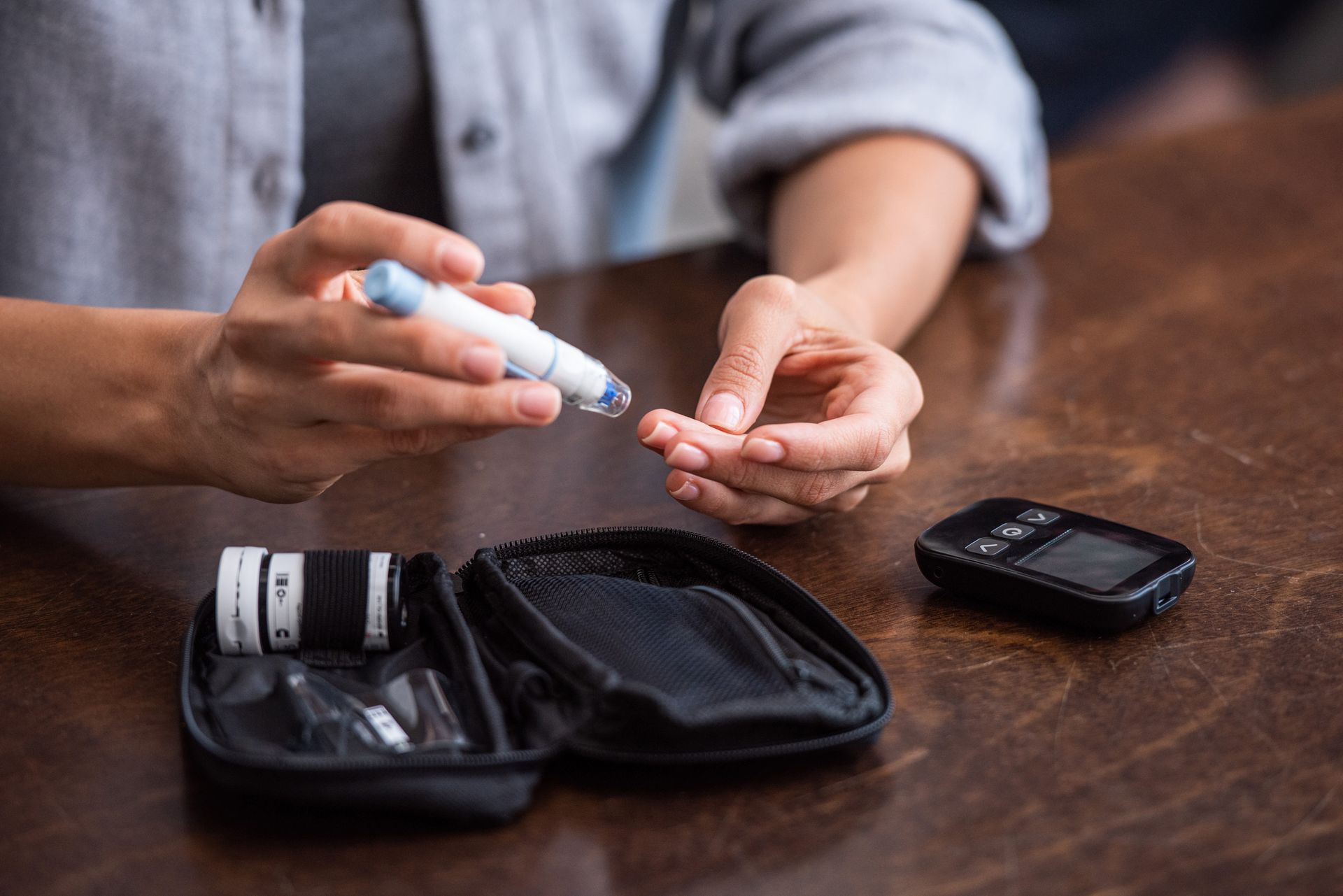Tracking Blood Pressure at Home: Prevent Complications with Remote Patient Monitoring
High blood pressure, or hypertension, affects millions of Americans and is one of the leading causes of heart disease and stroke. Yet many patients only have their blood pressure checked during office visits, offering a limited view of their overall health.
Remote Patient Monitoring (RPM) bridges that gap, allowing healthcare providers to capture real-time data and monitor chronic conditions between in-person visits.
What Is Remote Patient Monitoring (RPM)?
Remote patient monitoring uses digital tools, such as Bluetooth-enabled blood pressure cuffs, to track vital signs and transmit data securely to a healthcare provider. This technology gives clinicians a continuous view of their patients’ health between visits, making it easier to spot trends, prevent complications, and personalize treatment.
Patients also benefit from greater convenience and peace of mind knowing their provider is actively monitoring their health without requiring constant in-person appointments.
Conditions Commonly Monitored with Remote Patient Monitoring for Blood Pressure
Remote patient monitoring isn’t just designed for individuals with hypertension; it offers critical advantages for a wide range of chronic health conditions. For many patients, blood pressure serves as a key indicator of cardiovascular and overall health. Some of the conditions that benefit most from consistent blood pressure tracking through remote patient monitoring are:
1. Manage Hypertension More Effectively
Hypertension remains one of the most common and preventable causes of heart disease, stroke, and kidney failure. Both controlled and uncontrolled hypertension require regular monitoring to ensure that treatment remains effective.
2. Prevent Cardiovascular Complications with Daily Tracking
For individuals with existing heart disease or a history of stroke, maintaining stable blood pressure is essential to preventing recurrence or worsening heart function. Even small fluctuations can increase strain on the heart and arteries, leading to complications such as arrhythmias or heart failure.
3. Reduce Diabetes Risks with Regular Monitoring
People living with diabetes face a higher risk of developing hypertension and cardiovascular disease due to changes in blood vessel health caused by elevated glucose levels. Over time, high blood pressure can accelerate damage to the kidneys, heart, and eyes in diabetic patients.
4. Protect Kidney Function with Consistent Readings
The relationship between kidney function and blood pressure is closely intertwined: high blood pressure can cause kidney damage, and kidney disease can, in turn, worsen hypertension. For patients with chronic kidney disease (CKD), even modest increases in blood pressure can accelerate the progression of renal damage.
Key Benefits of RPM for Hypertension and Related Conditions
1. Early Detection and Intervention
When blood pressure readings are monitored daily, patterns and warning signs are easier to catch. Providers can identify concerning trends early and make medication or lifestyle adjustments before the situation escalates. This proactive approach helps prevent complications like heart attacks, strokes, and kidney damage.
2. Improved Patient Engagement
RPM gives patients a more active role in managing their health. Seeing their own data regularly encourages healthier choices and greater accountability. Many patients report feeling more connected and empowered when they can see progress over time.
3. Greater Accuracy and Consistency
Blood pressure taken in a doctor’s office can sometimes be higher due to stress, a phenomenon known as “white coat syndrome.” With remote monitoring, readings are taken in the comfort of a patient’s home, producing more accurate and consistent results.
4. Enhanced Communication Between Patients and Providers
Remote monitoring strengthens the link between patients and their care teams. Providers receive alerts when readings fall outside a safe range, allowing for timely follow-up and peace of mind for patients. It also enables ongoing, data-driven conversations about treatment goals and progress.
5. Reduced Hospitalizations and Healthcare Costs
By catching issues early and maintaining better blood pressure control, RPM helps reduce emergency visits and hospital readmissions. This not only improves patient outcomes but also lowers healthcare costs over time for both patients and healthcare systems.
Improve Blood Pressure Control with Consistent Monitoring
Remote patient monitoring is transforming the way hypertension and related conditions are managed. By delivering real-time insights, RPM empowers patients to take a more active role in their health while helping providers make faster, more informed care decisions. The result is stronger communication, earlier intervention, and better long-term outcomes.
At Neighborhood Health, we believe that consistent monitoring leads to consistent wellness. Our team uses remote blood pressure monitoring to help patients stay connected, supported, and in control of their health every day.
Take the next step toward better blood pressure management. Contact Neighborhood Health to learn how remote patient monitoring can help you stay on track and prevent complications before they start.

